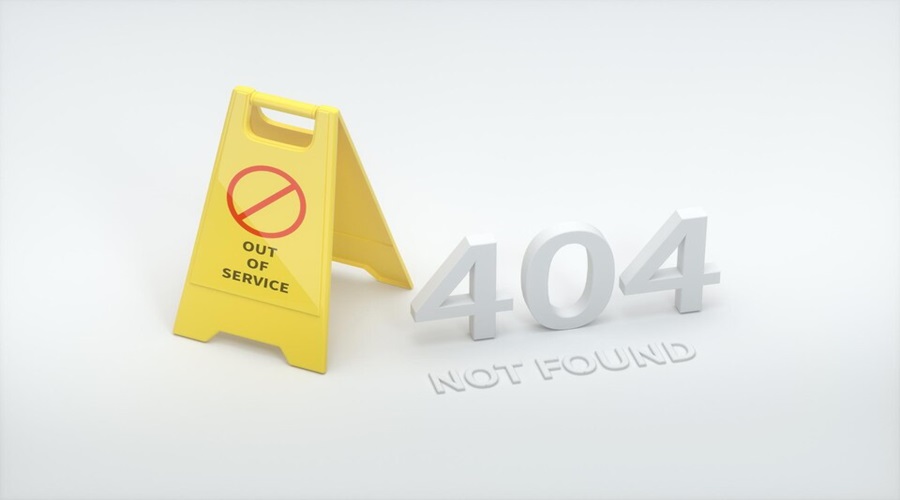Loose in the vast World Wide Web environment, it can be compared to stumbling on a 404 error – a virtual roadblock. Suppose you are one of the classes of people who have ever used the internet, either a web admin or a mere surfer. In that case, 404 errors are something you should get familiar with. Thus, in this comprehensive guideline, you will get to know all that you want to know about 404 errors, including their causes and everything about their eradication.
What is a 404 Error?
404 is an HTTP status code and is also better known as a ‘Page Not Found’ error or a message that read, “Error 404 Not Found”. It signifies that the server found the particular webpage that has been requested was not there. The server sends a 404 error to a user when the latter tries to access a webpage that does not exist on an internet site. It is the most frequent mistake the user makes when being online.
Causes of 404 Errors
To manage and work on any 404 errors, it is essential first to know why they occur. Here are the most common reasons:
- Deleted or Moved Pages: If the page has been removed or redirected to a new location without being well redirected, it cannot be found, leading to a 404 error.
- Mistyped URLs: The user might need to type the correct address, which takes them to a nonexistent web page.
- Broken Links: When other pages link to the pages that have been deleted, you get 404 errors with internal or external links.
- Server Issues: Sometimes, mistakes on the server, like misconfiguration or the server being down, will also lead to 404 errors for existing pages.
- Caching Problems: The cache list index thus might still have links that point to pages that are no longer existent or have been redirected.
Impact of 404 Errors on User Experience and SEO
404 errors can significantly affect both the user experience and your website’s search engine optimization (SEO) efforts:
User Experience
Feeling lost when someone visits a 404 page can be pretty irritating. If they end up on a poorly designed page, they might quit your site, resulting in high bounce rates. A harmful UX hinders your brand image and kills any indications of consumers engaging with your products.
SEO Impact
Most search engines, such as Google, consider the user experience when ranking websites. In particular, an extensive collection of 404 errors hurts the parameters of SEO. If the search engine bot comes across so many dead links on your site, then your site is demoted, and this makes it difficult for users to find you.
Loss of Traffic
If users frequently get a 404 error, you’re losing your audience and potential to make a sale. Every broken link is a potential customer not getting engaged—and potential sales are being lost.
How to Recognize 404 Errors on Your Website
Four hundred four errors are essential to find out in advance for the good health of a website. Here are some methods to detect them:
- Search Console on Google: This is a free tool that provides an overview of the 404 problems Google has found on your website.
- Website Crawling Tools: The third type of error check is a tool that can crawl your entire site and output all 404 errors; this is where tools such as Screaming Frog or Sitebulb are helpful.
- Server Logs: By scrutinizing your server logs, the latter may produce 404s, such as those resulting from bot crawls.
- Google Analytics: Create reports to monitor the 404 errors real users meet.
- Manual Checking: Run through your site’s menus and other links now and then to see if any glaring mistakes can be spotted.
Best Practices for Handling 404 Errors
While it’s impossible to eliminate all 404 errors, you can minimize their impact and provide a better user experience:
- Create Custom 404 Pages: Introducing an easy-to-navigate 404 page that will help visitors access other functioning pages on the website.
- Implement Proper Redirects: When URLs change, use 301 redirects to take users and search engines to the right page.
- Fix Broken Internal Links: Include frequently checking and updating internal links to point to existing pages.
- Monitor and Update External Links: Even though you have no control over other websites, you can contact the web admins to change the link to your website.
- Use Fuzzy Matching: Use today’s algorithms, which would best recommend similar pages in case of occurrence of the 404 error code.
- Provide a Search Function: There is nothing more frustrating than getting a 404 error; you should ensure you have a search bar on the 404 page.
- Regularly Audit Your Site: Some best practices include regular site-wide audits, which must be made to avoid unidentified 404 errors.
Turning 404 Errors into Opportunities
While 404 errors are generally seen as unfavorable, they can be turned into opportunities:
- Engage Users: To keep the users engaged on a 404 page, try using humor or creativity.
- Gather Insights: It is recommended to analyze the URLs that triggered the 404 error so that one would know what content the users were looking for.
- Improve Navigation: 404 data will let you understand what pages your users are trying to find that are not accessible to them and help in site structure optimization.
- Boost Conversions: Use more calls-to-action, especially on your 404 page, so that users are redirected to areas most relevant to them on your site.
Advanced Techniques for Managing 404 Errors
For those looking to take their 404 error management to the next level:
- Implement Log Monitoring: Set up automated alerts for sudden spikes in 404 errors, which could indicate more significant issues.
- Use Machine Learning: Employ AI algorithms to predict and prevent potential 404 errors before they occur.
- A/B Test 404 Pages: Experiment with different layouts and messaging on your 404 pages to optimize user engagement.
- Integrate with CRM: Connect 404 error data with your customer relationship management system to provide personalized assistance.
Conclusion
Although 404 errors are an unavoidable component of the internet, your website doesn’t have to suffer because of them. By understanding their causes, impacts, and solutions, you can turn these potential pitfalls into opportunities for improving user experience and SEO performance. Regular monitoring, prompt fixing, and creative handling of 404 errors will ensure your website remains user-friendly, professional, and optimized for search engines.
Remember, a well-managed 404 strategy doesn’t just prevent lost visitors—it can enhance your brand’s reputation, improve user trust, and ultimately contribute to the overall success of your online presence. Stay vigilant, be proactive, and transform those 404 roadblocks into pathways for continuous improvement.







